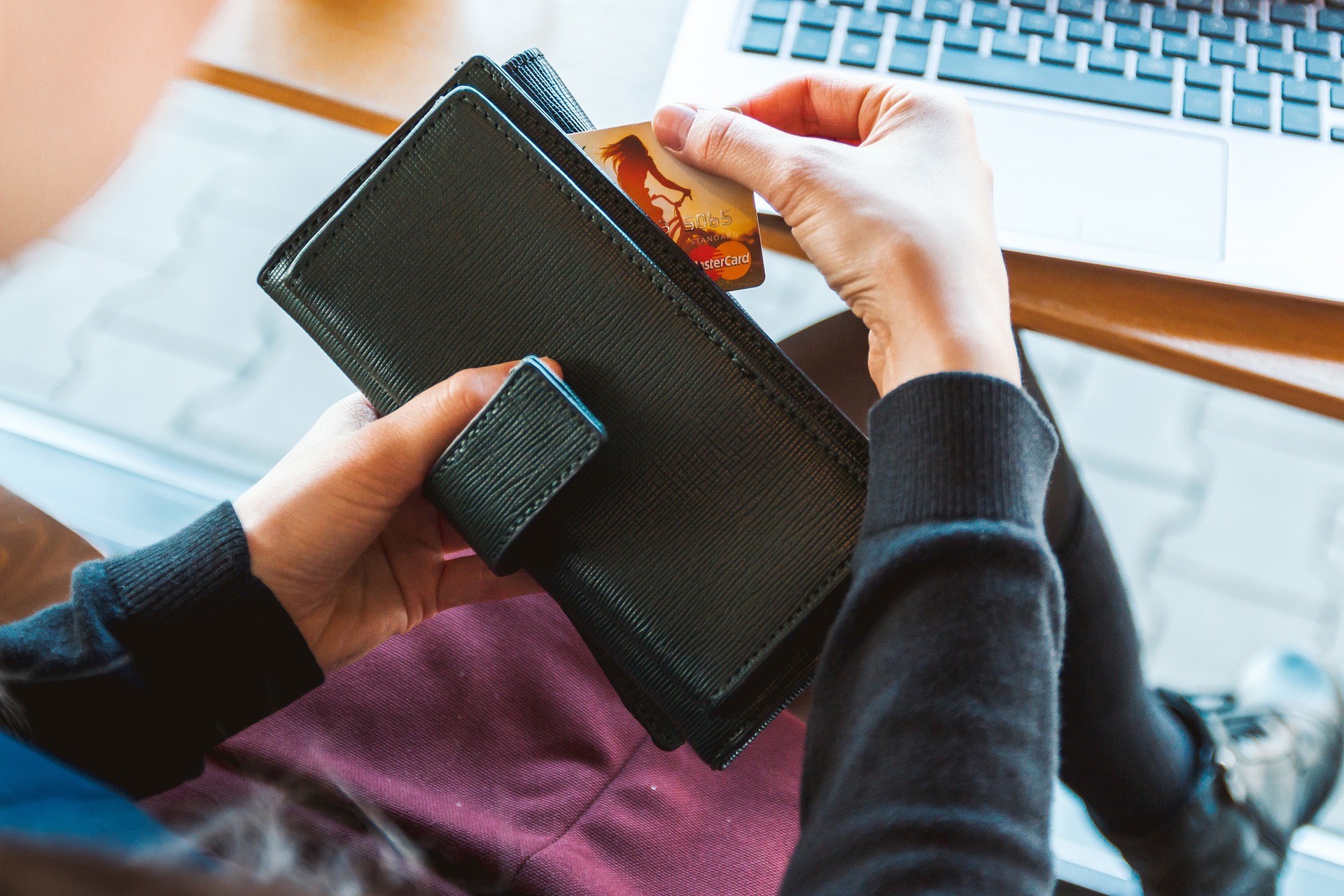What is the Future of Paying for Tickets?

We look at what options are here, what is coming and how to keep track of it all.
The advent of a cashless society has not really hit fully, but cash is seems to be on the out. Even for small purchases, people are more inclined to use cards, even if only to track their spending habits. In the UK for example, research shows that over 2.2 billion credit card purchases were made, worth £140 billion in one year.
Keep in mind that is not including chip and pin figures. While card fraud is still an issue, chip and pin and new security measures being put in place by Visa and those already in place by MasterCard means cards are getting more rather than less secure to use.
And yet credit cards and debit cards are also looking to fade as new technologies take over. And interestingly, credit card companies are all for it. Other technologies, such as PayPal have seen more success, but both merchants and their customers are wary of Paypal "freezing" funds and the like. And while some retail outlets do offer the pay by Paypal option, many consumers have complained of the payment option not functioning at all.
Digital Wallets
Digital wallets such as Google Wallet and Apple's Passbook, securely store your credit and debit cards, as well as loyalty cards, gift cards and the like. Both Google Wallet and Passbook also allow you to send money to anyone with a wallet as well. If you own an iTunes account - you have Passbook already. This plus the newly launched Apple Pay and Google Wallet, both on and offline payments can be made easily.
In addition to the wallet, Apple Pay and Google Wallet are also NFC enabled (near field communications) which means you can tap to pay - just like you can use your contactless credit card for small purchases currently - but with your phone.
Detractors say that the issues are many, 1. security, 2. investment into POS, 3. iPhone 6 penetration, and 4. battery life - these are not insurmountable by any stretch, especially give how fast the payments industry is moving. (Incidentally, for each of these points, there is a counter: 1. Apple Pay security is actually better and improving compared to other technologies, 2. investment into new POS is bound to come anyway, and Apple will control both the merchant and the consumer tech., 3. iPhone 6 penetration remains to be seen, to early to predict 4. Battery technology is moving rapidly as well).
And while say that Apple Pay with be met with "meh" in Europe due to the fact that chip and pin is already a very secure way to pay, some retailers do not accept card payments (even debit) for items under €10. And what's more it is really about the option for example, in Spain, you can get money from your account, via a cash machine with just your mobile phone and nothing else.
Bitcoin
Bitcoin. Considered a beacon of freedom to some, and the dark unknown to others, is still a new currency. Being new, it is an extremely volatile form of currency. You can buy them, transfer them or mine them (by solving complex maths problems), and what makes them very attractive to some consumers is the ability to make purchases with relative anonymity (bitcoin purchases can be tracked, but it is not very easy, making it an ideal payment option for nefarious activities).
Bitcoins are stored in online or mobile wallets as well, but bitcoins are unregulated and not insured, thereby making their mainstream uptake slow. It may not stay that way for long, as regulators are already swooping in and making more concrete regulations around virtual currencies.
Some companies such as Square, that provide POS systems for small to medium sized merchants are in the process of creating terminals that will accept bitcoins and Apple Pay. While the company has not indicated when these new terminals will be ready for the market, they are clearly betting on bitcoins sticking around, and their growing acceptance.
Other Ways to Pay
Other retailers and are also interested in exploring new payment options. Big box retailers in the US, for example, are considering their own payment systems for their customers. It is not to far fetched to see these sorts of systems expanding into the UK and Ireland. While there may seem to be an awful lot of ifs ands or buts about payments, you can start looking, tracking and planning now.
Tracking your sales
Tracking how your patrons are already paying, and how they have previously been paying is start of understanding how your audience may choose to pay in the future. Historical data is vital to understanding and seeing the patterns of your particular patron base. And part in parcel with that is understanding your your target audience.
POS is changing
POS is certainly changing, but it will take time. You may or may not need to rethink your POS depending on your audiences' buying behaviours. What's more, it doesn't have to happen overnight. Maybe it is just smart concessions, or merchandising that you want to upgrade. Making changes incrementally, maybe the best and least expensive way to go. Another thing to consider is that as POS and payments emerge and evolve, rather than changing an entire POS, all that may be required is an add-on, but that remains to be seen.
Purchasing options are a good thing
Not every customer wants to buy online, and not every customer wants to buy at the box office. Giving customers the option to purchase via kiosk, online, offline, Apple Pay - whatever they choose - gives them the freedom and encouragement to buy. For a lot of these unique payment options there are pluses and their are minuses, and each patron will have their list. Choice, puts the purchasing options back into the patrons hands.
What will happen to payment fees?
What is interesting is that there is little indication of any type of payments fees with new forms of payments. The landscape is changing so fast, that no one is quite sure where fees will or will not land. It is a (hopefully) optimistic outcome for merchants.
A Final Thought.
Consumers are facing a barrage of information, marketing messages, and promotions. At the end of the day though, if they don't click, tap or shake their way to pay for the cart - we haven't reached our best end goal. The payment option of the future is the one that makes it easiest for your patrons to purchase what they want from you.
Categories
Recent posts
Archive
- December 2025 (2)
- November 2025 (1)
- October 2025 (3)
- September 2025 (1)
- August 2025 (3)
- July 2025 (3)
- June 2025 (3)
- May 2025 (4)
- April 2025 (5)
- March 2025 (5)
- February 2025 (4)
- January 2025 (4)
- December 2024 (3)
- November 2024 (5)
- October 2024 (4)
- September 2024 (7)
- August 2024 (5)
- July 2024 (3)
- June 2024 (3)
- May 2024 (3)
- April 2024 (3)
- March 2024 (4)
- February 2024 (5)
- January 2024 (3)
- December 2023 (3)
- November 2023 (4)
- October 2023 (4)
- September 2023 (5)
- August 2023 (3)
- July 2023 (4)
- June 2023 (4)
- May 2023 (5)
- April 2023 (4)
- March 2023 (4)
- February 2023 (5)
- January 2023 (4)
- December 2022 (4)
- November 2022 (3)
- October 2022 (4)
- September 2022 (5)
- August 2022 (2)
- July 2022 (4)
- June 2022 (5)
- May 2022 (4)
- April 2022 (5)
- March 2022 (3)
- February 2022 (4)
- January 2022 (4)
- December 2021 (2)
- November 2021 (3)
- October 2021 (5)
- September 2021 (4)
- August 2021 (4)
- July 2021 (3)
- June 2021 (4)
- May 2021 (2)
- April 2021 (4)
- March 2021 (5)
- February 2021 (4)
- January 2021 (5)
- December 2020 (4)
- November 2020 (4)
- October 2020 (5)
- September 2020 (5)
- August 2020 (4)
- July 2020 (7)
- June 2020 (5)
- May 2020 (5)
- April 2020 (5)
- March 2020 (8)
- February 2020 (4)
- January 2020 (5)
- December 2019 (3)
- November 2019 (5)
- October 2019 (4)
- September 2019 (4)
- August 2019 (5)
- July 2019 (4)
- June 2019 (4)
- May 2019 (5)
- April 2019 (4)
- March 2019 (4)
- February 2019 (3)
- January 2019 (5)
- December 2018 (4)
- November 2018 (8)
- October 2018 (2)
- September 2018 (3)
- August 2018 (5)
- July 2018 (4)
- June 2018 (4)
- May 2018 (1)
- April 2018 (1)
- March 2018 (3)
- February 2018 (2)
- December 2017 (2)
- November 2017 (3)
- October 2017 (4)
- September 2017 (2)
- August 2017 (1)
- July 2017 (5)
- June 2017 (3)
- May 2017 (2)
- April 2017 (3)
- March 2017 (2)
- February 2017 (3)
- January 2017 (3)
- December 2016 (4)
- November 2016 (1)
- September 2016 (1)
- July 2016 (3)
- June 2016 (1)
- May 2016 (2)
- April 2016 (2)
- February 2016 (1)
- January 2016 (3)
- December 2015 (2)
- September 2015 (1)
- August 2015 (2)
- July 2015 (1)
- June 2015 (2)
- May 2015 (2)
- April 2015 (5)
- March 2015 (2)
- February 2015 (2)
- January 2015 (4)
- December 2014 (3)
- November 2014 (3)
- October 2014 (2)
- September 2014 (3)
- August 2014 (3)
- July 2014 (3)
- June 2014 (7)
- May 2014 (6)
- April 2014 (3)
- March 2014 (2)
- February 2014 (1)
- January 2014 (3)
- December 2013 (1)
- August 2013 (1)
- June 2013 (1)
- April 2013 (1)
Sign up for regular updates


